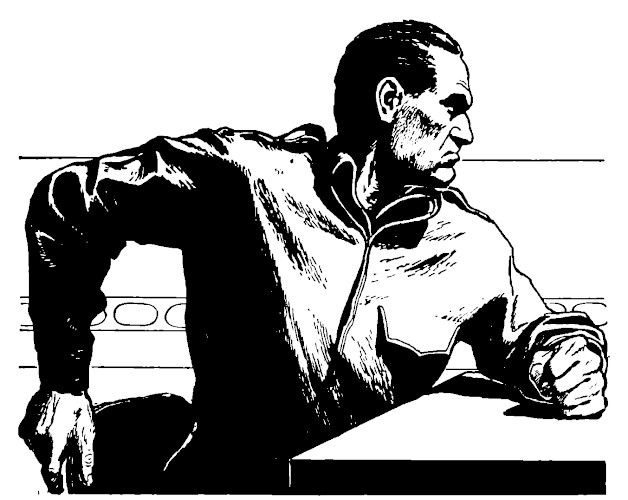NEEDLER
BY RANDALL GARRETT
Illustrated by Emsh
"The principal difficulty in the case ... lay in thefact of there being too much evidence. What was vitalwas over-laid and hidden by what was irrelevant."--Sherlock Holmes
[Transcriber's Note: This etext was produced from
Astounding Science Fiction June 1957.
Extensive research did not uncover any evidence that
the U.S. copyright on this publication was renewed.]
They just didn't give a damn. The first load of survivors brought backafter the Battle of Leymon's Star had been short-circuited somewhere,and they didn't give two hoots whether they lived or died.
The same thing happened to the crew of the GSS Bedevin after theskirmish in the Great Rift. The Bedevin was found drifting along, outof control, after having demolished an enemy vessel with a blast of thenew aJ guns.
It was a case of "the operation was a success, but the doctor died." Ormight as well have.
The crewmen of the fighting ships were in a state of semicatatonia.
The alien ships were burned and blasted out of space, with theexception of those which turned tail and ran. The survivors in thehuman ships were picked up and taken to Kandoris VI, the Galactic MainBase of the Interstellar Fleet.
Fleet Commander Allerdyce hospitalized the men and turned the problemover to the Civilian Research Corps. General Director Eckisster frownedover the whole mess, fired out assignments right and left, and dumpedthe bulk of the responsibility into the lap of Roysland Dwyn, chief ofthe Special Weapons Group.
Dwyn immediately asked for a specimen from the Fleet HospitalPsychiatric Ward.
Bilford, the chief psychometrist, brought one of the crew members fromthe Bedevin into the office of the head of Special Weapons four daysafter the survivors had been picked up.
Roysland Dwyn glanced up from the work at his desk when Bilfordentered. Behind the huge plastic block of the desk, he looked nolarger than the average man. It was only when he stood that it becameapparent that Roysland Dwyn was two sizes larger than the average man,regardless of where you measured.

Bilford walked on into the office. "You wanted to see Captain Gisser,Roysland?"
Roysland nodded his massive head. "Bring him in; I want to get thewhole picture on this business."
Bilford nodded and turned back toward the door. His eyes looked sad andpitying, and he ran a lean, nervous hand through his bushy gray hair ashe called out: "All right, Captain Gisser—come in here."
As Captain Gisser strolled in from the outer office, Roysland watchedhim carefully.
Gisser was tall and graceful, in the near-perfect physical trim of afighting man. He moved with military precision, but without the stiffrigidity of formal marching. He took one step through the door—andstopped.
Roysland narrowed his gray eyes and looked at the captain's face.The expression on it was definitely not the sleepy, glazed look ofthe hypnotic catatonic. After a moment, Roysland decided it could bedescribed as a sort of apathetic introspection.
"How long will he stand like that?" he asked Bilford.
Bilford spread his hands. "Until someone tells him to move or hecollapses from lack of food or sheer fatigue."
"Have him sit down over there." Roysland pointed. "No use making thepoor guy stand up."
"Go o